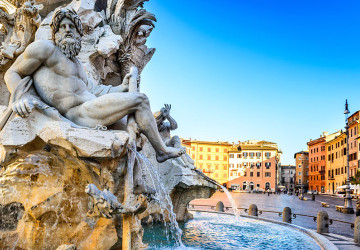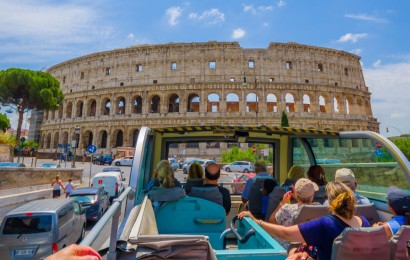The fountains of Rome are not just splendid examples of hydraulic and artistic engineering; they are also silent witnesses to centuries of history, culture, and art that have shaped the face of the Eternal City. From simple, ancient utility structures to magnificent examples of baroque and Renaissance beauty, Rome's fountains tell stories of ambitious papacies, genius artists, and historical changes that span millennia.
A Journey Through Rome’s Waters
History and SignificanceThe origins of Rome's fountains are lost in the mists of time, dating back to ancient Rome when aqueducts brought fresh and clean water to its cities from sources miles away. These structures were not only vital sources of drinking water but also symbols of power and prosperity. Over the centuries, Rome's fountains evolved from simple water points to elaborate works of art, reflecting the styles and tastes of different epochs.
The Most Emblematic Fountains of Rome
1. Trevi Fountain
The most famous of all, designed by Nicola Salvi in the 18th century, is a triumph of the Baroque, with its majestic statues representing the sea and its strength.
2. Fountain of the Four Rivers
Located in Piazza Navona, this Gian Lorenzo Bernini creation represents the rivers Nile, Ganges, Danube, and Rio de la Plata, each symbolizing a continent known at the time of its creation.
3. Turtle Fountain
An example of Renaissance elegance, located in the Sant'Angelo district, is famous for its figures of youths assisting turtles into the basin.
4. Fountain of Acqua Paola
Also known as the Fontanone del Gianicolo, this imposing baroque fountain celebrates the reopening of the Trajan aqueduct.
5. Triton Fountain
Another Bernini creation, this fountain located in Piazza Barberini, shows a Triton blowing into a shell, supporting the coat of arms of the Barberini family.
6. Fountain of the Naiads
Located in Piazza della Repubblica, it represents the naiads, water deities, in a decidedly more modern style compared to its counterparts.
7. Fountain of Neptune
Also in Piazza Navona, shows the God of the sea in battle against a sea creature, an example of Renaissance sculptural mastery.
FAQ: Frequently Asked Questions About Rome's Fountains
1. Why does Rome have so many fountains?
Rome has an ancient tradition of hydraulic engineering inherited from the ancient Romans, who built aqueducts to transport water into the city. The fountains were the end point of these aqueducts, symbols of abundance and prosperity.
2. Is it true that throwing a coin into the Trevi Fountain ensures a return to Rome?
Yes, according to tradition, if you throw a coin with your right hand over your left shoulder, it will guarantee a future return to the city.
3. Which fountain in Rome is your favorite and why?
Each fountain has its unique charm and history, making it difficult to choose one. The Trevi Fountain for its exuberant Baroque, or the Turtle Fountain for its subtle elegance, are both must-sees.
4. How often are Rome's fountains cleaned?
Rome's fountains are regularly cleaned and maintained by the municipal administration to preserve their beauty and structural integrity.
5. Are there hidden fountains in Rome worth discovering?
Yes, Rome is full of small fountains and "nasone" often overlooked by tourists but loved by locals. Exploring the less trodden alleys can reveal these hidden gems.
The fountains of Rome are much more than mere tourist attractions; they are pillars of Roman history, art, and culture. We invite everyone to explore these wonders, not just to admire their beauty but also to understand the depth of history they carry with them. Thanks to Green Line Tours, it's possible to fully immerse in the enchantment of Rome's fountains, discovering not only the most famous works but also those less known that hide equally fascinating stories.

